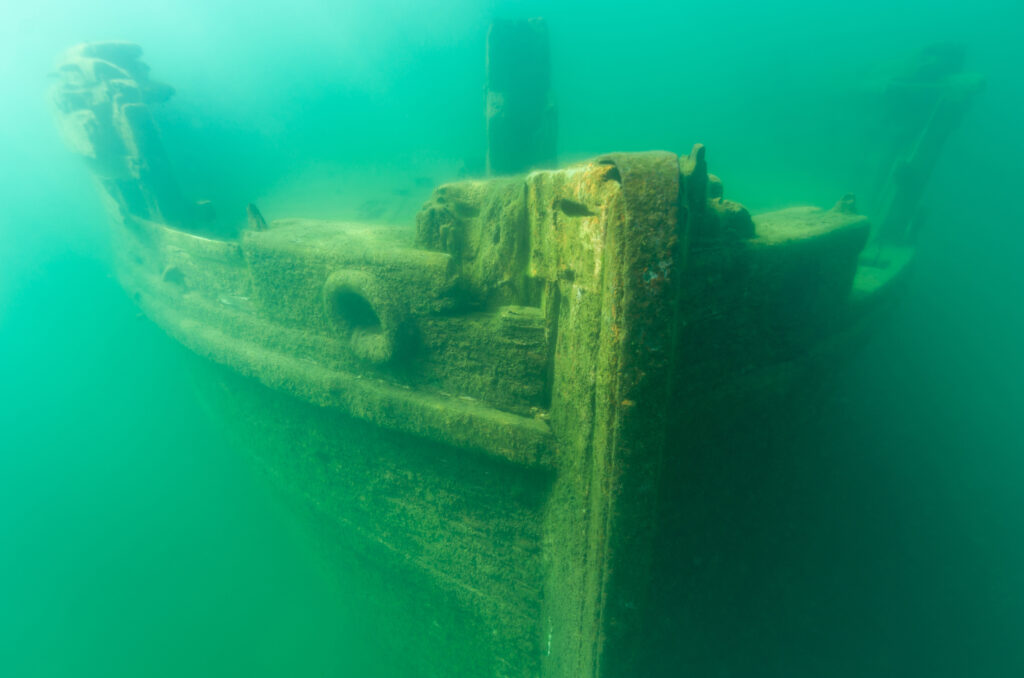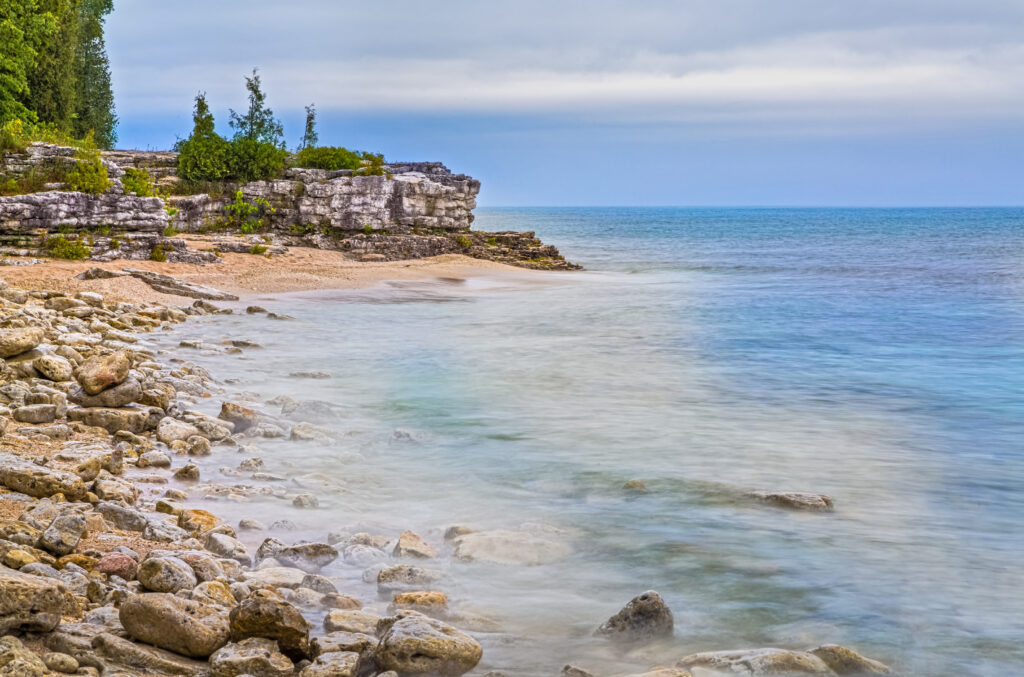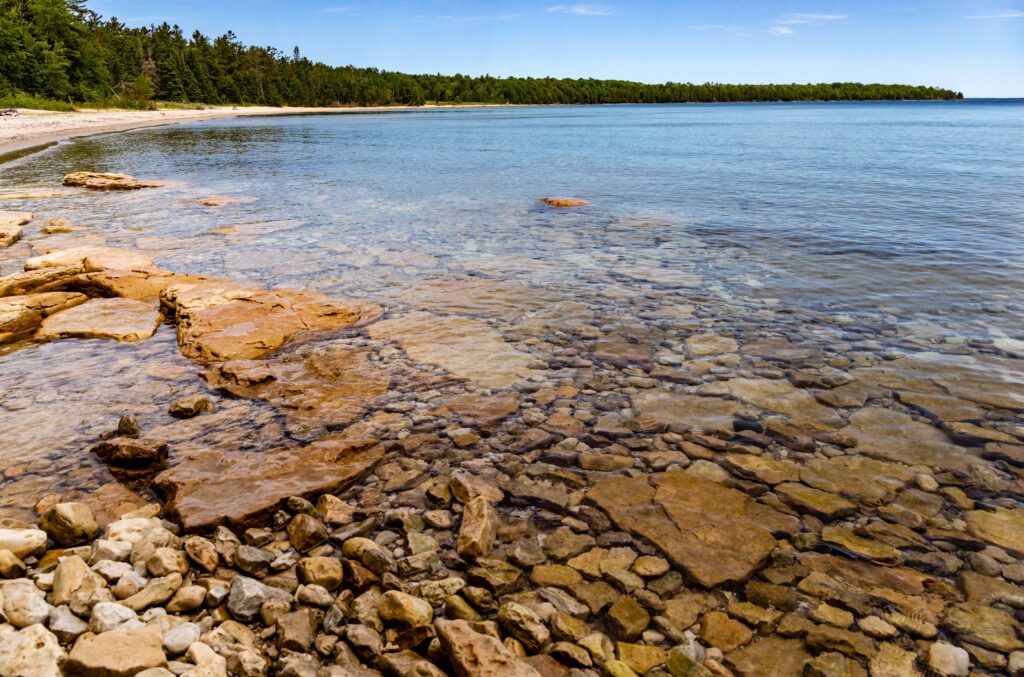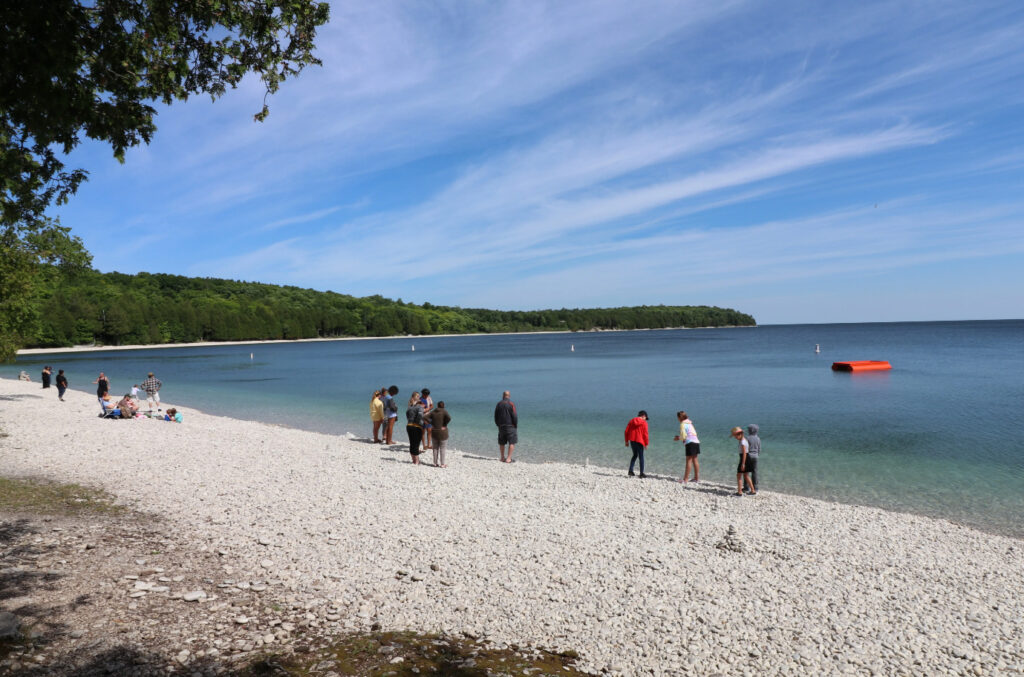Do you know Door County by another name, “Death’s Door”? Have you ever wondered how the county got such a macabre name despite its natural beauty and popular destinations? Most agree that the name has to do with the county’s history of shipwrecks, though there are several theories as to where “Death’s Door” actually came from.
History of Death’s Door

The strait between the tip of the Wisconsin peninsula and Plum Island is referred to as Death’s Door, a once necessary passage that was the only way to connect the trading post in Green Bay to the rest of the Great Lakes. This was a well-known dangerous passageway for boats; the strait is narrow between the peninsula and the islands, and the weather can turn in an instant. Hidden shoals, unpredictable winds, and converging currents sank numerous sailing vessels and wooden boats in the 17th and 18th centuries, but the history of Death’s Door goes back even further to the mid-17th century, when Native Americans inhabited the land.
Rival Native American Tribes

Before European settlers came to the region, two Native American tribes, the Potawatomi and the Winnebago (or Ho-Chunk), lived on the peninsula and the islands. The Winnebago lived on the mainland and the Potawatomi on the islands, and the two rival tribes often clashed in wars. One night, the Winnebago warriors set sail for the islands as the Potawatomi were coming to face them. Initially, the waters were calm, but a sudden squall attacked the warriors. The furious waves capsized sailboats and canoes, stranded some warriors on rocky shores, and swept others out to the lake. Some parties disappeared without a trace. Both Native American tribes lost hundreds of warriors that night, and they gave the narrow passageway the moniker “Death’s Door,” both to honor the lives lost and to give life to the fear they felt of the strait.
French Explorers

The first Europeans to explore the Door County region were the French, who commonly used the same names for places as Native Americans. They heard the tales of the treacherous passageway from the tribesmen who remained in the area, and they dubbed it “Porte des Morts,” which literally translates to “Door of the Dead” in French. It’s theorized that this name served the French economically as well—the dark name was used to discourage any British fur traders from using the strait to access the mainland, as it was the only entryway between the Great Lakes and what would become Green Bay.
Is Death’s Door Still Dangerous?

Despite the passage’s ominous name and the Native Americans’ deadly tales, ships and vessels continued to risk the strait, even all the way to 1940! Because of the rising number of shipwrecks, the Plum and Pilot Island Lighthouses were built to assist with navigation. Eventually, in the late 1880s, the Sturgeon Bay Ship Canal was constructed so ships could avoid the Death’s Door passage altogether. In fact, this canal is still used quite frequently by freighters to this day.
Does this mean that Death’s Door is still dangerous and impassable? Not quite! Any time you make the journey to Washington Island, you’re passing through Death’s Door! The waves and wind are just as wild today as they were in the past, but the steam-engine ferry can safely and accurately navigate its way to shore. The strait is also popular with scuba divers hunting for the remnants of shipwrecks, and Death’s Door Maritime Museum in Gills Rock pays tribute to the ships and lives lost to the deep water. Next time you’re up in Gills Rock or visiting Washington Island on the ferry, remember that you’re braving Death’s Door!


